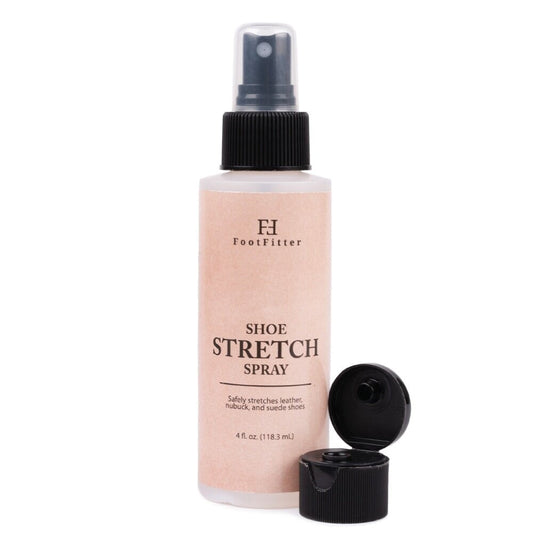
Which Shoe Stretcher Do I Need?
Share
Most of us are on our feet for the greater portion of the day, so when our shoes hurt, life can suck. But it doesn’t have to be that way. Shoe stretchers can widen and lengthen a shoe overnight, saving you the trouble of breaking in a new pair while alleviating pressure points. But which type of shoe stretcher should you use? That depends on the type of shoe you’d like to stretch and your pain relief needs.
Below, we explain the seven main types of shoe stretchers and each stretcher’s specialty.
Remember: No matter which shoe stretcher you use, a stretcher work best on natural materials like leather and suede. Manmade materials like polyurethane and vinyl don’t have as much give, and tend to revert back to their original shape over time. If you own shoes comprised of manmade materials, this just means you’ll have to re-stretch the shoes again later on.

One-Way Shoe Stretcher
Best for: A shoe that’s too narrow and pinching at the toes
What it does: A one-way shoe stretcher frees up space in the toe box, widening the shoe for a better fit. Insert spot-stretching plugs for additional stretching at pressure points. This will prevent your shoes from causing bunions, corns, and calluses. A one-way shoe stretcher will work on most flat shoes, including flats, sneakers, and bucks.

Two-Way Shoe Stretcher
Best for: A shoe that’s generally too small (too narrow and not long enough).
What it does: A two-way shoe stretcher lengthens and widens the entire shoe. Insert spot-stretching plugs for trouble spots. A two-way shoe stretcher gets rid of the “too tight” feeling with new shoes, and reduces the break-in period.
A two-way shoe stretcher will work on most flat shoes, including flats, sneakers, and bucks.

Boot Stretcher
Best for: A boot that’s too narrow
What it does: A boot stretcher loosens the toe area, while spot-stretching plugs give you additional pain relief at trouble spots. A boot stretcher reduces the break-in period, preventing pain and blisters.
While a boot stretcher works on most boots, high heel boots require a high heel boot stretcher, and Western boots require a Western boot shoe stretcher.

High Heel Shoe Stretcher
Best for: A high heel whose toe box is too narrow
What it does: A high heel shoe stretcher widens the toe box so there’s less pressure on your toes and the balls of your feet. Use spot-stretching plugs for targeted relief from bunions, calluses, and corns.
Because high heels come in many different heel heights, our FootFitter High Heel Shoe Stretcher is available in two sizes: one for 1” – 3” heels, and one for 3” – 6” heels.

Cast Iron Ball and Ring Shoe Stretcher
Best for: Anyone dealing with nagging foot-related issues (bunions, corns, and hammertoes) and needing spot stretching in trouble areas.
What it does: Made of cast-iron steel, a ball and ring shoe stretcher is an effective way to loosen pressure points overnight. A cast-iron ball and ring shoe stretcher is an ideal complement to a one-way or two-way shoe stretcher, as this type of stretcher reaches areas other stretchers cannot.

Toe Box Raiser
Best for: A toe box that’s too tight up top.
What it does: A toe box raiser alleviates pressure at the top of your toes, helping to prevent chafing.

Vamp and Instep Raiser
Best for: A shoe whose vamp area is too tight.
What it does: A vamp and instep raiser stretches the vamp (the top of part of a shoe that covers the instep and toes), alleviating pressure on the instep of your foot.
For these and other stretchers, please visit us at www.footfitter.com!
Main Image Source: Lukas via pexels







